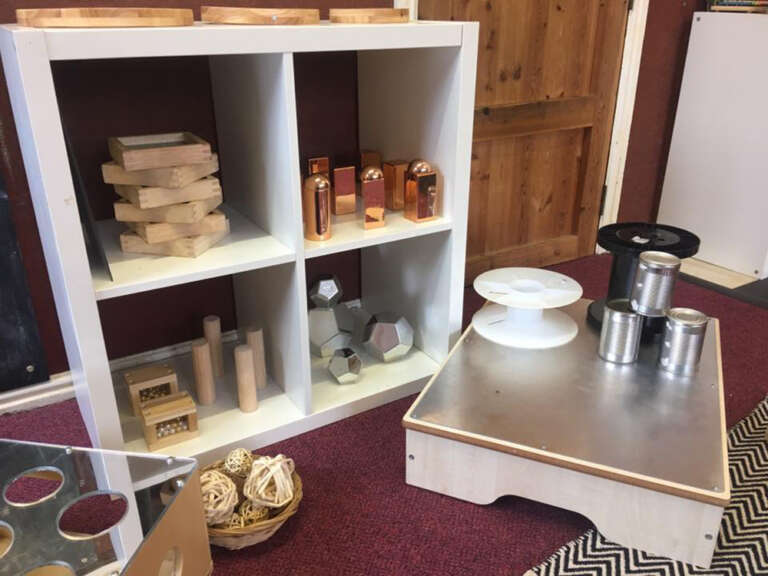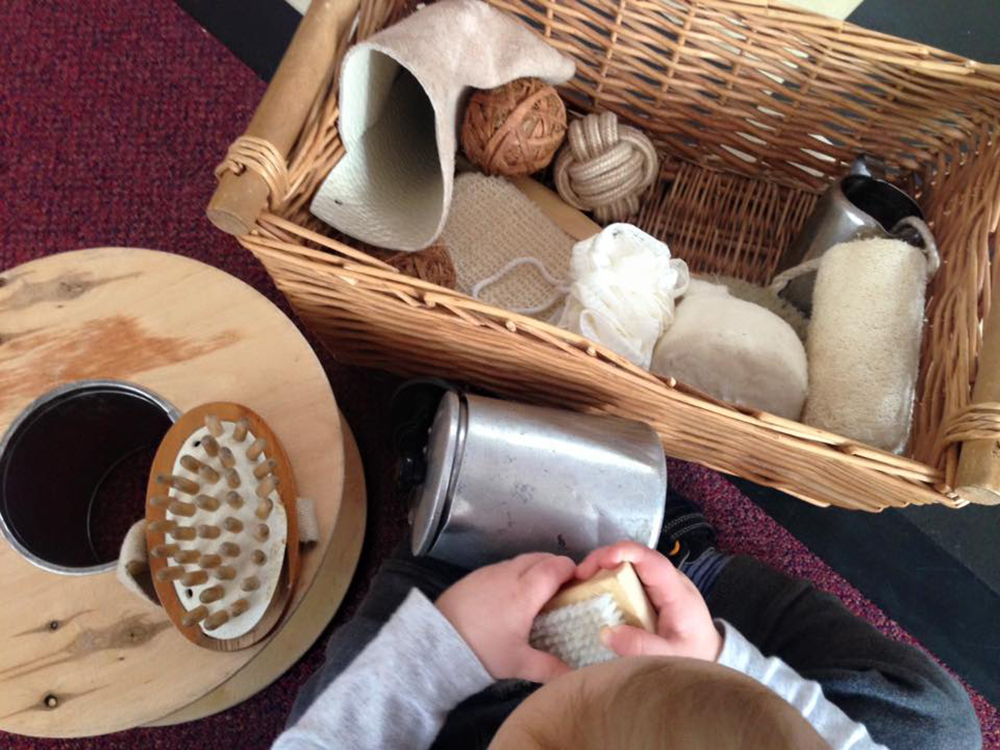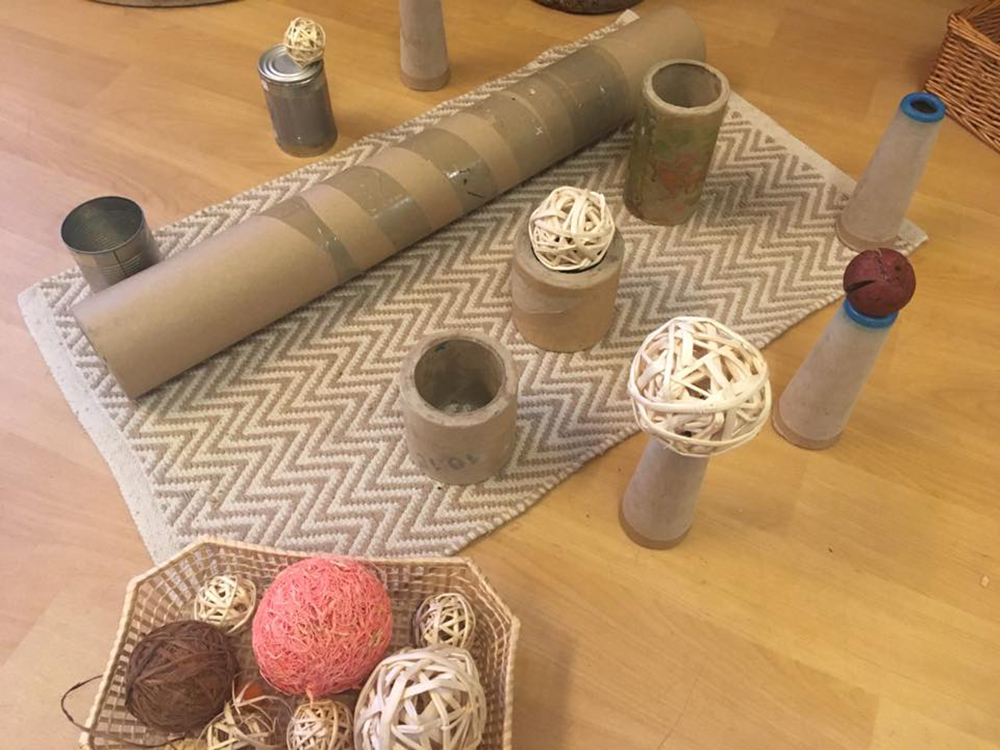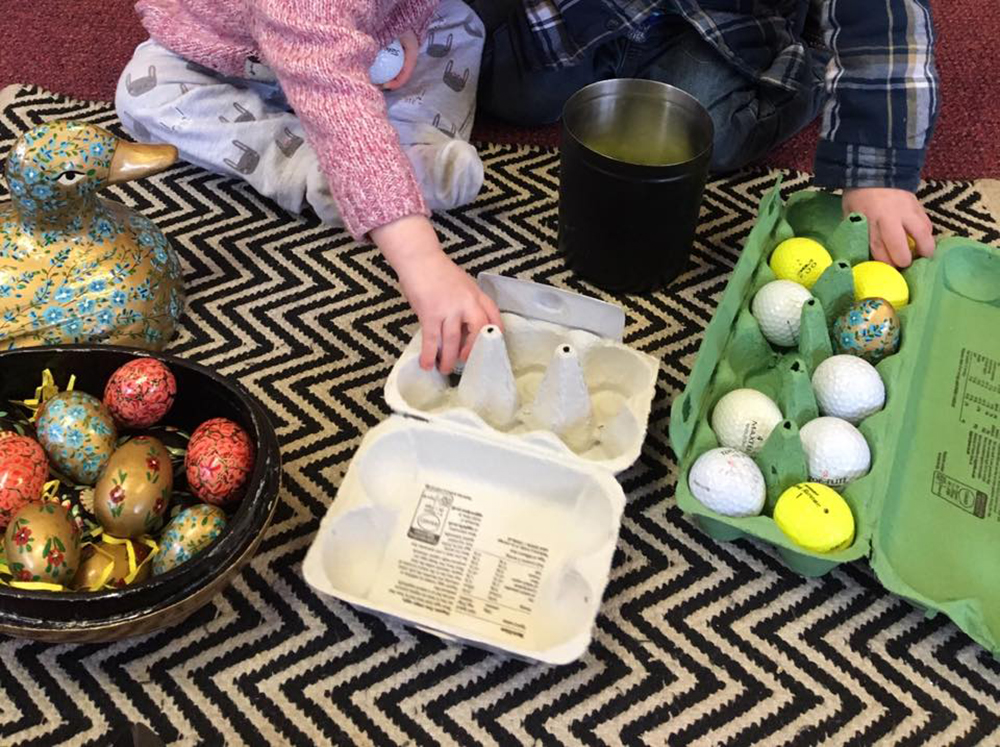Let’s not forget that loose parts are nothing new. Block play and treasure baskets are a staple in every early year’s environment and offer the same benefits and experiences. They’re open-ended, developmentally appropriate and foster creativity and critical thinking.
Here are some items you might consider adding to your environment…
Brilliant Blocks

Blocks come in so many different shapes, sizes and materials. Even on their own, they can create an engaging and inviting loose parts play space for babies. I also believe that good blocks are worth investing in. They will last a lifetime if cared for properly and can be used by all ages and stages of development; we often rotate our blocks throughout the setting. We love the Marvellous Metallics range of Silver, Gold and Rose Gold construction blocks and pebbles. The rainbow colour wooden blocks and sensory blocks containing beads also work really well.
You might add plastic cable reels, tin cans and large log slices alongside your blocks for further investigation and exploration.
Safety note: You can purchase safety tin openers that do not leave sharp edges on tin cans. Alternatively, use thick tape around the lip of the can and always discard cans that have been squashed.
2. Creative Cardboard
Another great resource that is open-ended but safe is cardboard. We collect cardboard boxes, tubes, egg cartons and rolls by reusing all the packaging and waste from our kitchen. And, as it’s easily replenished it doesn’t matter if it gets ruined.
3. Terrific Treasures

Lots of standard treasure basket items are great loose parts; brushes, wooden items, wicker balls, fabric and curtain hoops are all safe and large enough for babies to handle. From the very youngest babies, who will explore the items through their senses, right up to 2-year-olds, who will explore using schemas, treasure baskets are a great resource.
4. Sensational Senses
Our sensory room is filled with loose parts; light up blocks, pebbles and rollers are all great for stacking, positioning and rolling. In addition to these, we use lots of lengths of fabric, including tulle, cotton, hessian and sequin fabric.
What will babies do with loose parts?
Often, loose parts play is associated with older children who will design and create structures. Essentially it is all about exploration, discovery, tinkering and experimenting. Babies may not create a rocket by placing 4 blocks on top of one another with a triangular block on top, but they will be beginning to explore how the items work by combining them in different ways.
Babies will put things inside things, they will balance objects on top of other objects, they will roll them, they will create lines – building their knowledge ready for when they are able to build rockets.
It is very important, as practitioners, that we see the value in babies exploring materials and items. It is by repeating patterns of behaviour, with many different objects that babies and young children are able to construct knowledge and meaning about the world. So, next time you see a baby constantly moving items from one place to another or repeatedly scattering items out of containers, remember that they need to tinker before they can create!
Article written by Little Miss Early Years
With thanks to Laura England – Little Miss Early Years – an early years teacher, enthusiast and blogger, for writing this post.






